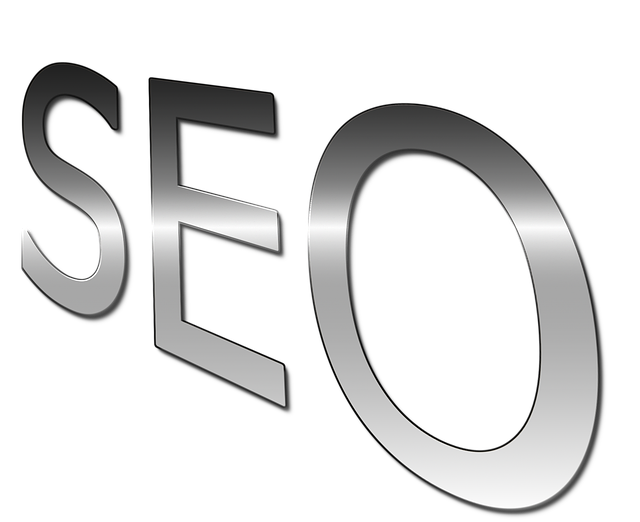White-Hat SEO Techniques focus on ethical optimization of digital content, prioritizing long-term success and user trust through high-quality, relevant, and engaging material. Key practices include keyword research for natural integration into well-crafted copy, producing unique content updated regularly, and building high-quality backlinks through legitimate means like guest blogging and social media engagement. Meta tags, descriptions, internal linking, and leveraging external resources are vital tools for optimizing web pages and boosting content visibility. Measuring performance using analytics allows for refining content to better meet audience needs, while staying current with industry trends ensures relevant and engaging material that drives sustainable growth.
In the digital landscape, content creation is a powerful tool for boosting online visibility. This article explores the essence of White-Hat SEO Techniques and how they shape effective content strategies. We’ll delve into key principles like understanding target audiences and optimizing content without cutting corners. From keyword research to meta tags, internal linking, and leveraging external resources, discover proven methods to enhance search engine rankings ethically. By staying updated with industry trends, you can create content that not only attracts but also engages your audience meaningfully.
Understanding White-Hat SEO Principles

White-Hat SEO is an ethical and sustainable approach to optimizing digital content for search engines. It aligns with Google’s guidelines, focusing on creating high-quality, relevant, and engaging material that offers genuine value to users. Unlike Black-Hat SEO, which employs manipulative tactics to rank higher, White-Hat Techniques prioritize long-term visibility and trustworthiness. These methods include keyword research, where content creators identify relevant terms and integrate them naturally into well-crafted copy.
Another key principle is creating unique, informative, and regularly updated content that caters to the specific needs of the target audience. This involves understanding user intent behind search queries and crafting content that satisfies that intent. Additionally, building high-quality backlinks through legitimate means such as guest blogging, partnerships, and social media engagement is a cornerstone of White-Hat SEO, contributing to improved site authority and visibility in organic search results.
Keyword Research for Effective Content Creation

Keyword research is a cornerstone of successful content creation for White-Hat SEO techniques. It involves identifying and understanding the terms and phrases users search for when looking for information related to your niche. Tools like Google Keyword Planner, SEMrush, or Ahrefs can help uncover valuable insights such as search volume, competition, and user intent. By targeting relevant keywords strategically throughout your content—in titles, headings, meta descriptions, and body text—you increase the likelihood of ranking higher in search engine results pages (SERPs).
Effective keyword research ensures that the content you create resonates with your target audience. It allows you to tailor your writing to address specific pain points, questions, or needs expressed by users. For instance, if your research reveals a high volume of searches for “best organic coffee beans,” you might create an in-depth guide comparing various brands and their unique characteristics. This not only satisfies user intent but also positions your content as authoritative and valuable, thereby enhancing your website’s credibility and attracting backlinks from reputable sources—a key aspect of White-Hat SEO practices.
Crafting High-Quality, Optimized Content

Crafting high-quality content is a cornerstone of successful White-Hat SEO Techniques. It involves going beyond meeting basic requirements and creating valuable, relevant, and engaging material that resonates with your target audience. Quality content not only satisfies search engine algorithms but also fosters user trust and encourages longer visits, lower bounce rates, and increased interactions—all essential factors for boosting your site’s ranking.
Optimization is another key aspect. This means integrating strategic keywords naturally throughout your content while ensuring readability remains a priority. Optimized content includes well-structured headings, subheadings, meta descriptions, and alt tags that not only help search engines understand your content but also make it easier for users to navigate and consume. By combining quality with optimization, you create powerful assets that drive organic traffic and enhance your online presence through ethical White-Hat SEO Techniques.
Utilizing Meta Tags and Descriptions

In the realm of White-Hat SEO Techniques, meta tags and descriptions play a pivotal role in optimizing your content for search engines. These elements are crucial components of your webpage’s structure, acting as a bridge between your content and potential visitors’ queries. A well-crafted meta tag captures the essence of your page, providing a concise summary that resonates with search engine algorithms. When aligning with user intent, it enhances click-through rates, as users are more inclined to interact with results that directly address their search terms.
Effective use of meta descriptions further refines your SEO strategy. These descriptive snippets not only summarize the content but also include targeted keywords, offering search engines and users a clearer understanding of what the page is about. By integrating relevant keywords naturally, you increase the likelihood of ranking higher for specific search queries. This, in turn, drives organic traffic to your site, fostering a positive user experience that aligns with White-Hat SEO principles.
The Role of Internal Linking in White-Hat SEO

Internal linking is a key component of effective White-Hat SEO strategies. By strategically interlinking relevant pages within your website, you create a robust network that signals to search engines the hierarchy and relevance of your content. This technique ensures that both users and algorithms can easily navigate through your site, enhancing overall user experience while boosting your page’s authority.
When implementing internal linking, focus on creating contextual links that provide value to readers by directing them to related or complementary content. These links not only help distribute link equity across your pages but also enrich the information architecture of your website. Search engines view this as a sign of high-quality, well-structured content, which can significantly improve your site’s ranking in search results over time.
Leveraging External Resources and Backlinks

In the realm of White-Hat SEO Techniques, leveraging external resources and backlinks is a strategic move that significantly enhances content visibility and authority. High-quality external links from reputable websites act as votes of confidence for your content, signaling to search engines that it offers genuine value. These backlinks can be secured through various ethical methods such as guest blogging, where you contribute valuable insights to popular blogs within your niche. By sharing expertise and providing unique perspectives, you not only establish yourself as an authority but also earn the opportunity to include a link back to your own content.
Additionally, engaging with industry influencers and participating in relevant online communities can open doors to natural backlinks. When influential figures or respected peers in your field share or reference your content, it carries substantial weight in search engine rankings. This organic approach aligns perfectly with White-Hat SEO principles by focusing on creating exceptional content that naturally attracts links from other websites, fostering a healthy and sustainable online ecosystem.
Measuring and Analyzing Content Performance

Measuring content performance is a crucial step in any White-Hat SEO strategy. By employing analytics tools, content creators can gain valuable insights into user engagement and behavior. Key metrics to track include bounce rates, time on page, click-through rates (CTRs), and conversion rates. These data points help identify which content resonates with the target audience and what areas need improvement. For instance, high bounce rates might suggest that a particular piece of content isn’t fulfilling users’ information needs, prompting creators to refine their approach.
Regular analysis enables content creators to adapt their strategies dynamically. They can experiment with different formats, topics, and keywords to see what drives organic traffic and improves search rankings. This iterative process is essential in the ever-evolving digital landscape where user preferences and search engine algorithms are constantly shifting. Utilizing White-Hat SEO techniques, including keyword research and on-page optimization, combined with performance analysis, ensures content stays relevant, engaging, and aligned with best practices.
Staying Updated with Industry Trends

In the dynamic landscape of digital marketing, staying ahead of industry trends is a cornerstone of successful White-Hat SEO Techniques. Content creators must be adept at adapting to shifts in search engine algorithms and user preferences. This involves constant vigilance to identify emerging topics, keywords, and content formats that resonate with audiences. By keeping pace with these trends, creators can ensure their content remains relevant, engaging, and optimized for search engines.
One effective strategy is to leverage data analytics tools to track industry movements. These tools provide valuable insights into popular search terms, content performance metrics, and user behavior patterns. Incorporating these trends seamlessly into content creation processes allows for the crafting of high-quality, keyword-rich materials that naturally attract organic traffic. Staying informed enables creators to implement White-Hat SEO Techniques effectively, thereby enhancing online visibility and driving sustainable growth.
